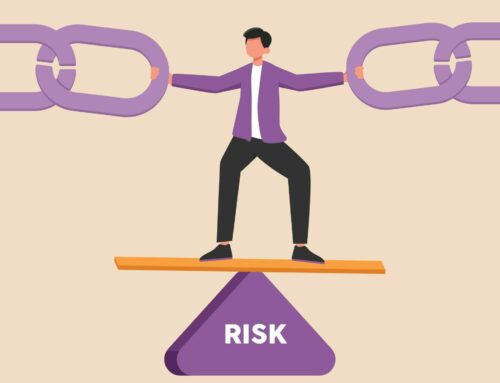There are many names for these contracts (Emergency Response, Restoration, Rapid Response, Disaster Recovery, Business Recovery, Business Resumption, etc.), and many vendors offer them. What are they and should your organization have one?
Regardless of what the vendor calls them, they are essentially a contract put in place in advance so that at time of disaster, the vendor can quickly respond to your event to provide recovery/ protection of assets, drying of books and important documents, clean-up of the disaster site, and/or restoration of facilities and services, and disposal of hazardous materials. The value of these contracts comes from your ability to go through your organization’s well defined procurement process, check out the vendors and their services, and most importantly, talk to customers the vendors have actually recovered in the calm environment of today versus the stressful environment of an actual disaster. By the way, if they don’t have any such actual recovery references, move on to the next vendor. Also this gives you an opportunity to visit their facility, meet their staff, and review their in-house assets. You should realize that many of the assets may need to be brought in from outside the area. This may prove to be an additional advantage in a regional disaster when all the local assets are themselves in jeopardy and have been confiscated by the government. This is a great example of “expect what you inspect.” There are lots of firms that say that they’re in this business, but in too many cases it’s in name only. One of this author’s customers, Dr. Stanley Weinrich, PhD ChemE, CBCP, likes to say: “When a disaster occurs is not the time to be exchanging business cards.”
We’ve seen contracts as short as one page and longer than 25 pages. Length is not the key measure; what’s covered in the contract is what to look for. What’s frequently missing is pricing, i.e. pages and pages of hourly rate or skill prices, equipment prices, supply prices, lodging, per diem, and mileage charges, etc. Many vendors will tell you they don’t provide “line-item pricing” in advance. This should be a big concern to you. After all, if they can’t price it now, how are they going to price it at the time of disaster? Ask to see a sample billing from a previous large cost incident. Don’t you want to know now what the labor costs will be? How about OT? Is travel time billable? What skills are on board? Is it union or non-union labor? What is the cost of each piece of material, each type of equipment? This is also a good opportunity to find out what kind of equipment they have in inventory. If they don’t price it, they probably don’t have it. If they don’t list freeze drying equipment, how are they going to save your critical books and documents? Do they have hazmat suits? More importantly, are they licensed in your state to provide hazmat and other recovery services? Where and how will they dispose of hazardous materials? This is an excellent area to research their previous customers’ experiences. In other words, where were their hazmats disposed? You don’t want your disaster and successful restoration to be followed by a legal disaster. What is the cost of demobilization? Are you responsible to get their equipment and staff home? Remember, you should expect to pay a premium for rapid response, but you should not expect to be surprised.
Understand the vendor’s documented warranties. Do they warrant their work? For how long? How about the technology they supply to you? What about odors or mold returning? Are there penalties or just replacement? Do you get replacement equipment, parts, etc. but have to pay for “repeat” labor? Is the burden of proof on you alone?
Actual laws and our lawyer friends are another great reason to put a business resumption contract in place, now! Your legal team will have time today to analyze the T’s and C’s (Terms and Conditions), of the vendor, and their limits of liability. You’re going to potentially bet your business on your selected vendor, in the event of some disaster. What’s your recourse if they fail to deliver service, because they’re overwhelmed by a regional disaster? If you wait until an actual disaster event to locate vendors, create contracts, and engage these vendors, your lawyers will try to hold up your recovery while they review contracts, and most importantly, liabilities, as they should. If your company is truly at risk of going out of business because of the magnitude of the disaster, your senior management will override the attorneys to save the business. This action will save the business, but put the organization at legal risk down the road. Let the attorneys do their job, now!
Another area of concern should be vendor payment terms. Their contract may request payment in as little as ten days. Most organizations can’t pay an invoice that quickly, which could put you at serious financial risk. Your insurance will probably not reimburse those late payment charges. More importantly, at the time of the disaster, if your organization is not meeting the very short-term A/R requirements, the vendor has every legal right to stop any further restoration efforts until all previous invoices are paid. This is a huge exposure that can be avoided in the negotiations now, instead of at time of disaster when you have no leverage. Another reason to negotiate more liberal payment terms is cash flow. FEMA and insurance reimbursements will take an extended period of time, long past any resumption vendor’s ten-day A/R requirement. With proper billing procedures in place, many insurers will agree to make progress payments based on supporting documentation. Plan ahead!
Insurance is another area to be researched now, not later. Have your insurance provider review the business resumption contract, pricing, what’s covered in their services, what’s not, and are there limitations for reimbursement, e.g., maximums, either individual or cumulative, etc. Few organizations get outside help in reviewing these contracts and vendors. This is a huge mistake. Much like hot site contracts, this is probably the first and only business resumption contract ever put in place by your organization. Your procurement people alone won’t have the expertise to know what to look for.
Will your business resumption vendor submit their bills to your organization in the format and on the forms required by your insurance carrier and FEMA? FEMA becomes relevant for reimbursement in the case of a regional disaster and the Federal Government declares your eligibility for payment. Our experience has demonstrated that one hundred percent of the time, if the forms are not completed correctly, neither insurance carriers nor FEMA will provide reimbursement in a timely fashion. In fact, time will be wasted, not only redoing documentation, but also in discussion of the dispute. On a side note, although not the responsibility of the recovery vendor, now is the time for you to develop recovery accounting codes, etc. so that you can quickly and accurately track the extraordinary expenses incurred as the result of a disaster. When organizations wait until time of disaster to create these accounting/ tracking codes, they invariably miss incremental expenses and subsequently cannot obtain reimbursement.
What is the vendor’s insurance coverage? Comprehensive general liability? Workers comp? Will they put your organization as an additional named insured in their policy? How about the vendor’s subcontractors’ insurance?
You should understand who the vendor will use as subcontractors at time of disaster. Even the very largest business resumption organizations use subcontractors at the time of disaster. This is not a bad thing. Keeping an entire team of recovery specialists on the payroll without work is expensive. And subcontractors allow a vendor to respond to multiple concurrent disasters in one or large geographies. It is unlikely the names of the subcontractors will be specified. Ask for them, in writing. By the way, what are their experiences and references?
What is the length of the contract? It should be no more than a year and it should be able to be terminated at will, by you, without cause, but not by them without advance concurrence from you.
How much should this contract cost per month or year? The answer to that question is tied to what you receive without actually having a disaster. Will they review your plans, facilities, define requirements, etc., or is this just a contract put in place to allow you to research them in advance and to be ready at time of disaster? If you get no services now, your contract costs should be zero.
In conclusion, EVERY organization should have a business resumption contract in place, but remember two things: everything is negotiable now and “Caveat Emptor”!







Leave A Comment
You must be logged in to post a comment.